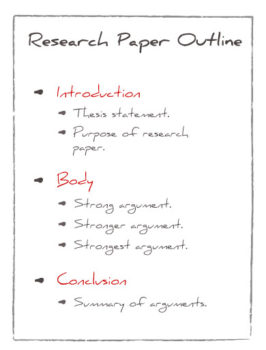
In yesterday’s post, we reviewed the process of clarifying important results and how to hold one’s accountable to the task’s completion. Today, we will cover how to break down large goals and projects into small, achievable tasks.
Many high school and college students procrastinate because they are both unclear and overwhelmed by the tasks, assignments, and goals that they would like to complete. Many students that I work with complain that their anxiety rises significantly with projects like research papers, presentations, and portfolios. Deadlines often sneak up on students and these assignments are usually completed in a last-minute rush of fear, over-work, and lack of sleep. Most result in grades that are disappointing and well below the student’s capabilities.
 For many teens and college students, the idea of setting a larger life or school goal like getting a 3.5 GPA for the semester or becoming fluent with Photoshop seems too overwhelming to actually consider. Yet, if broken down into weekly specific tasks or habits, these goals are very realistic in most cases. To gain fluency with Photoshop might require 100 hours of self-directed study and practice. In the course of a 52 week year, this is but 2 hours of work per week. If, additionally, one reached out for instruction and assistance with the task, the needed work would likely be reduced further. Most teenager and college students in America can find an extra 2 hours per week to reach a desired goal.
For many teens and college students, the idea of setting a larger life or school goal like getting a 3.5 GPA for the semester or becoming fluent with Photoshop seems too overwhelming to actually consider. Yet, if broken down into weekly specific tasks or habits, these goals are very realistic in most cases. To gain fluency with Photoshop might require 100 hours of self-directed study and practice. In the course of a 52 week year, this is but 2 hours of work per week. If, additionally, one reached out for instruction and assistance with the task, the needed work would likely be reduced further. Most teenager and college students in America can find an extra 2 hours per week to reach a desired goal.
Usually, the work necessary for completing projects or life goals could be easily done with a consistent and routine amount of effort. But, when left ignored or unspecified, these tasks become the bogeymen that scare the wits out of students.
There is a very simple cure for procrastination and overwhelm
There is a very simple cure for this kind of procrastination and overwhelm. Nearly every productivity or general self-help book written in the last 25 years has advised readers to separate larger projects into small, specific actions to be taken, in order that they be appropriately planned for and completed. I recommend one further step: acquire a whiteboard that sits in plain view of your desk or bed so that you can see upcoming deadlines well in advance.
On the first day of school, students should gather the first round of major test and project deadlines and write them out on their whiteboard. Work backwards from the deadline and estimate the realistic needed start date for the project or test preparation effort and enter that date in your smartphone’s calendar app with a reminder to notify you on the start date.
How do I make a realistic plan for my research paper?
On the day that the notification flashes across your phone, spend a nice chunk of time on planning. Ask yourself a question like: “What is the very first step in completing this research paper?” Very often the primary step in writing a research paper is to read the needed/assigned texts in order to have a solid understanding of the issues and ideas in play. Ask: “How long will it take me to read and take succinct, useful notes on the X number of pages so that I can understand the concepts to be written about?” and “When can I complete this reading and note-taking?”
Some teachers and students use outlining as a step in the writing process. Some classes will require that a student turn in a topic, outline, rough draft, final draft, and completed paper as part of the assignment. If required, then an outline must be completed. “How much time will the outlining process take me?”
Research papers are rarely of high caliber when completed in one extended effort. Many students will try to think through and complete the writing of a rough or final draft in a single, multi-hour session. This is a mistake. The mind can maintain high levels of focus for no more than an hour at a time without rest. Cognitive research points to 45 minutes as the average max length of attention before cognition declines. All study or writing sessions should be broken up in multiple units of 45 minutes plus a 5 to 15 minute break in between sessions. One should not complete more than 2 sessions back to back without a longer break unless in an emergency situation.
Instead of shooting to complete a rough draft in one extended sitting, ask yourself, “How many minutes of actual work will the rough draft require?” Let us assume for example, that a classic 5 paragraph essay for high school can be drafted in approximately 120 minutes of solid effort. Breaking such an effort into 45 minute sessions with a 15 minute break afterwards means that the 120 minutes of writing will be completed in 2 hours and 30 minutes. (2X 45 minute sessions of writing, 2X 15 minute breaks, 1X 30 minute session of writing= 90+30+30= 150 minutes).
How much time will each step actually take? When does it need to be completed?
In the case of our assigned high school research paper, a successful student estimates the total writing time on the rough draft to be 180 minutes. He then breaks that task into 45 minute sessions with a 15 minute break afterwards and decides to complete the task over two evenings. Because the due date is still 3 weeks from today, he enters the writing sessions on his calendar for a later date which is several days prior to the rough draft due date.
In planning the work of completing the final draft, a successful student knows that the best final drafts are completed well before the due date, so that they can be re-read and edited prior to the deadline. This successful high school student knows that his History teacher will take several days to read and comment on the rough draft before returning them. So he plans 3 additional 45 minute writing sessions for editing and revision over the course of the days following the return of the rough draft.
Upon submission of the final draft, there should be little work remaining in the days leading up to submission of the completed paper. His teacher will make some final suggestions and return the final draft 4 days prior to the final deadline for completed papers. He believes that 45 minutes of work are required to complete the final edits before completion, so he adds those to his calendar for a date two days before the submission deadline.
Life is easier and grades are better when plans are made and followed
Because this successful student knows exactly which actions to take, in which order, and on which dates, the process  of writing the research paper will progress smoothly. Instead of feeling overwhelm, anxiety, and panic, our successful student does not feel worried and does not procrastinate or avoid the tasks to be done. He follows the plan he has laid out, with some small adjustment along the way, and finds that he has plenty of time to complete all steps in the process. His paper is polished and well-written and he rightfully earns the 95 grade that his teacher awards him.
of writing the research paper will progress smoothly. Instead of feeling overwhelm, anxiety, and panic, our successful student does not feel worried and does not procrastinate or avoid the tasks to be done. He follows the plan he has laid out, with some small adjustment along the way, and finds that he has plenty of time to complete all steps in the process. His paper is polished and well-written and he rightfully earns the 95 grade that his teacher awards him.
If you or your child is not efficient with time-management, planning, and reviewing, then you need our help. We can teach any student in America to plan and review each week, clarify long term goals and desires, and help him or her hold their feet to the fire of accountability. Learning to break down bigger projects and goals into specific actions is the first component of our support programs for teens and college students. Take a look at our Teen Independence Program for high school students and the College Life-Management Program for more information about our time-management and mental performance skill coaching.
